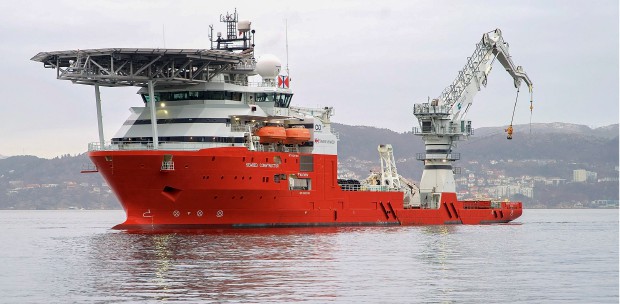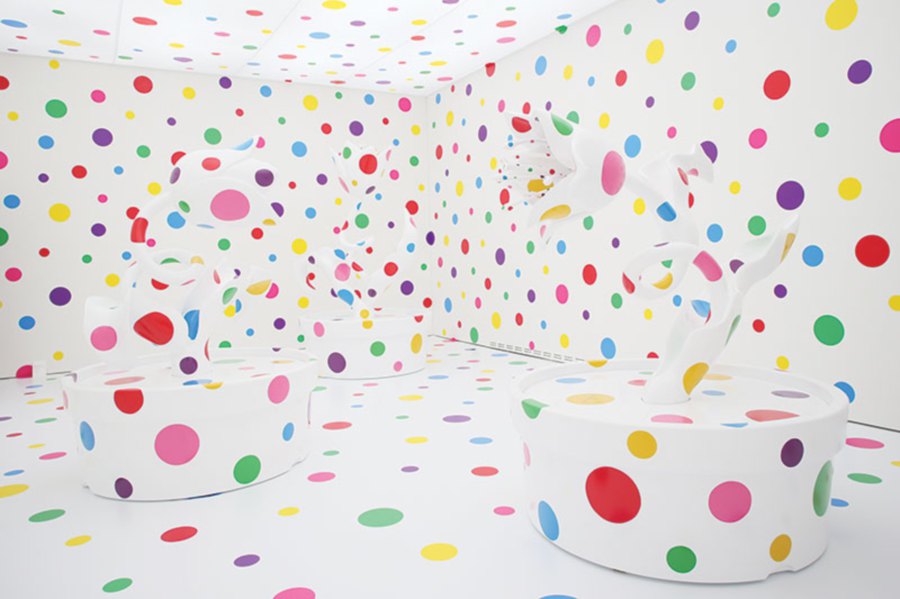
THE show opens with a pre-taped recording:
“It is my great pleasure to hold a solo show at The National Gallery Singapore.
“Every day I struggle intensely from morning to night to create artworks.
“Creation of art is a solitary pursuit. As an artist, I am convinced this can only be achieved by struggling desperately and risking my life to inspire and share my passion with people around the world. This is my belief, and I want it to be delivered as my message throughout the world.
“I want to keep fighting until my last breath. It is my most earnest wish and greatest pleasure to imagine that the slightest touch of my desire in creation, hope and passion towards art are sensed by everyone even after my death.
“The fight stretches to infinity.
“I want to create artworks that are even more innovative. My sleepless nights are spent thinking of this. My desires for creations are longings for the unknown mystery. As an avant-garde artist I just want to fight to the end of the universe, until I expire.” From avant-garde artist Yayoi Kusama with Love.
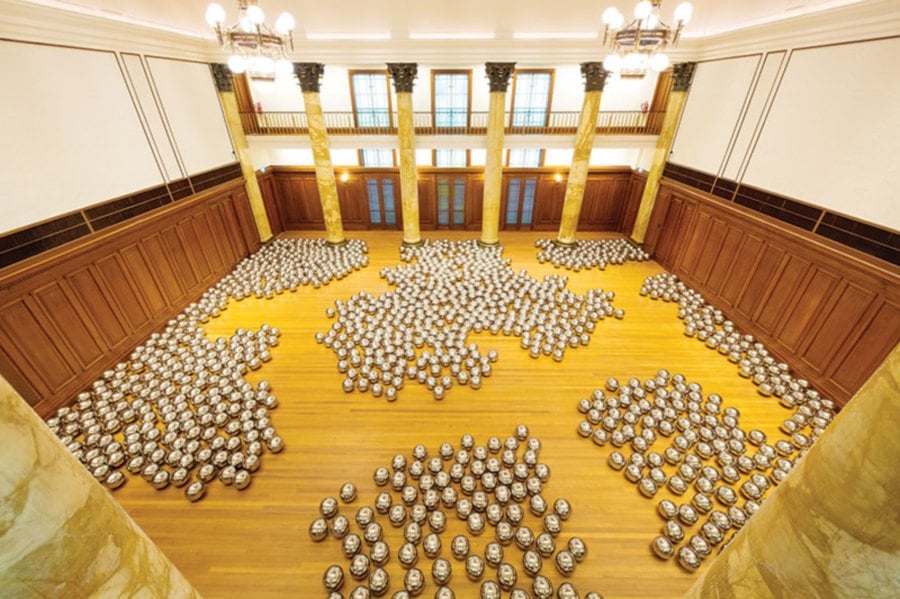
BEGINNINGS
The artist Yayoi Kusama grew up privileged, a descendant of a deeply respected family who, for more than a century, managed wholesale seed nurseries on massive expanses of land. Her love for drawing and painting was inherent; she never left home without her sketchbook, always looking for something to immortalise.
She’d run freely in the family’s seed-harvesting terrains, sinking into beds of violets, a longing in her heart for things she had yet to understand, but wanted so much still. These flowers would on occasion take on human expression and speak to her, in human language. Her pet dog would eventually do the same. Petrified and confused, Yayoi would run home and seek refuge in her closet, furiously drawing what she witnessed.
Of vast wealth, her family supported the arts, but the very thought of their daughter becoming an artist was unacceptable. It was to be a war between mother and daughter especially, one which was waged throughout her adolescent life. Three years after the war ended, Yayoi became a student at the Kyoto Municipal School of Arts and Crafts. She despised it, recounting her time there as “unbearable, useless, oppressive, old-fashioned and exasperating”.
She decided to go to America after seeing a photograph of a striking child with weaved locks. At the time, Yayoi imagined a romantic America overflowing with barefooted children and virgin prehistoric woodlands. In a second-hand bookstore at Matsumoto City, she chanced upon a book of Georgia O’Keeffe paintings, and for reasons known only to her, was convinced that the artist was the lifeline she needed to make her way to America.
A six hour train ride to the American Embassy in Shinjuku ensued, and she found O’Keeffe’s address in a copy of Who’s Who. Yayoi wrote to O’Keeffe.
And Georgia replied.

BEYOND BEGINNINGS
Armed with 60 of her most prized silk kimonos, 2,000 paintings/ drawings and a million yen sewn into sleeves and other bills “stuffed between toes”, Yayoi made her way to the US. She arrived in Seattle on Nov 18, 1957 and mounted her first show at Zoe Dusanne Gallery a month later, showing 26 inexplicably stunning works of watercolours and pastels.
Her show was a triumph and despite pleas for her to remain, her heart was set on New York.
New York, she said, was “hell on earth”. It wasn’t long before she had exhausted all her savings and for the first time in her privileged life, tasted wretched poverty. The studio she rented was ramshackle, the windows broken, and the cold quickly ate into her bones. For a bed, Yayoi hauled in a door from the street, and meals were shrunken chestnuts and broth of discarded fish heads and wilted cabbage leaves that she’d cook in a junkyard 10 cents pan.

The artist began experiencing severe bouts of neurosis. Often working from dawn until the moon disappeared, Yayoi would paint nets on her canvases, only to wake up and discover that these very nets had found their way to her windows and covering her floors, and made their way onto her skin. Several trips to the hospital proved futile, and she was told to seek psychiatric assistance.
Action painting was de rigueur then; no one understood her works of intricate nets repeating themselves into oblivion; her paintings were the exact opposite in terms of purpose. But Yayoi was determined that constructing distinctive art which originated from within herself was the only thing she’d do. It was the only thing she wanted to do.
THE EMPRESS ARRIVES
Some are born great, some achieve greatness, and some have greatness thrust upon them, said William Shakespeare.
Yayoi Kusama may very well be all three. Her desire was to envisage and measure, from her own position in it, using dots, the limitlessness of the immeasurable universe, an accrual of specks forming the negative spaces in the net. She vehemently questions mystery’s deepness, if infinite infinities occur outside of our universe.
In October 1959, Yayoi had her first New York solo at The Brata Gallery on 10th Street, the very place Willem de Kooning and other leaders of The New York School kept their studios. Obsessional Monochrome featured only five works: one-colour, simple yet intricate canvases of subliminal accruals of microcosmic lights, in which the spatial cosmos could be seen for as far as the eye permits. She went on to do many more shows, at The Nova Gallery in Boston, the Gres Gallery in Washington, steadily consolidating her position in the avant-garde of New York.
It’d take 10 books and a half to chronicle Yayoi’s life and art, but a few which must be mentioned include her metamorphosis into an environmental sculptor, which began to take root in the early 1960s. By then, her nets had continued to thrive and gleefully leapt out of her canvases, spilling to the floors, tables, chairs, everywhere.
Her first “soft-sculpture” was shown in 1962 at the Green Gallery in New York. It comprised a white-painted lounger and an eight-legged sofa entirely obliterated with phallus-shaped swellings made of stuffed fabric.
In her next show, in December 1963, Yayoi debuted her very first installation. Aggregation: One Thousand Boats Show featured a solitary rowing boat covered in yet again, stuffed ivory cloth phalluses. Allegedly, at the opening of the show, Andy Warhol yelled, “Yayoi, what’s this? It’s fantastic!”
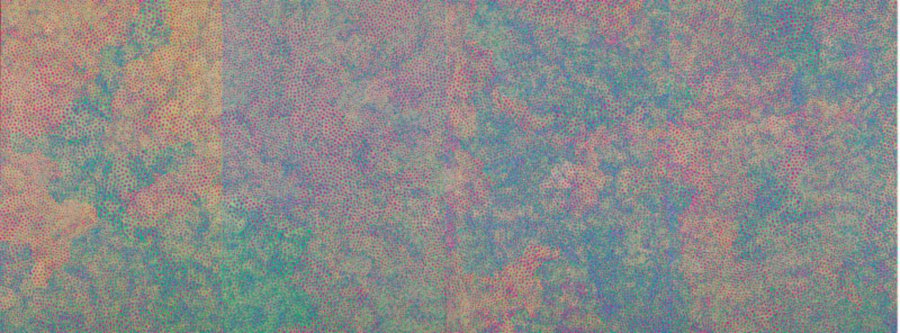
The general consensus would be that Yayoi was a raving, incurable sex maniac/ addict. Truth is, she’s horrified by the very idea of copulation. She thought the male organ dirty and repulsive. And as a way of conquering this terror, she went on to make thousands more of phallic soft sculptures. Yayoi displays a similar distaste for macaroni. She explained: “We live surrounded by food of a sort that reaches us via automats and conveyor belts. We gobble machine-manufactured foods ceaselessly. Just the thought of eating, over time, thousands of macaroni servings is horrifying and sets off an overwhelming obsession. That explains my macaroni sculptures; it’s an attempt to rid myself of that fear”.
Then there’s also the Kusama Happenings, comprising performance pieces which she started in 1965.
Her first major Happening was the Body Paint Festival in front of Manhattan’s Saint Patrick’s Cathedral on Fifth Avenue. Yayoi’s performers were made to strip, and proceeded to burn some 60 American flags, while the artist pitched draft cards and Bibles into the roaring fire. Yayoi was in the vanguard of proffering what the times necessitated. She has become a legend.
So much of her life and art is on show at Life Is The Heart Of A Rainbow. And as a self-professed Yayoi fan, this wonderfully-wild exhibition can be aptly concluded, for now, with the artist’s own composition, A Manhattan Suicide Addict.
Swallow antidepressants and it will be gone
Tear down the gate of hallucinations
Amidst the agony of flowers the present never ends
At the stairs to heaven, my heart expires in their tenderness
Calling from the sky, doubtless, transparent in its shade of blue
Embraced with the shadow of illusion
Cumulonimbi arise
Sounds of tears, shed upon eating the colour of cotton rose
I become a stone
Not in time eternal
But in the present that transpires
Yayoi Kusama: Life Is The Heart Of A Rainbow
WHEN: Until Sept 3
DETAILS: www.nationalgallery.sg/yayoi-kusama.
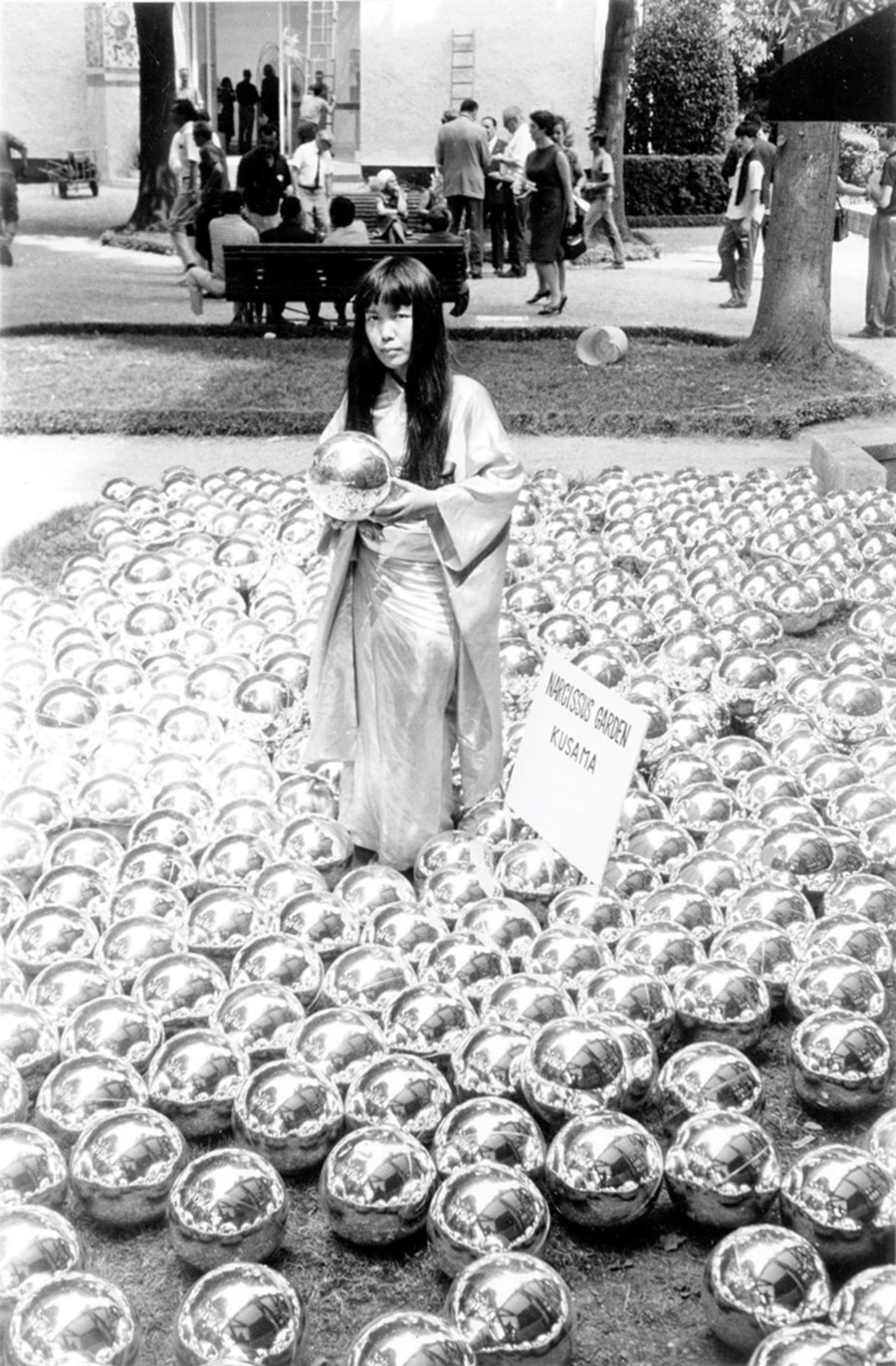
About Yayoi Kusama
Yayoi Kusama was born in Matsumoto, Nagano prefecture in 1929. After studying painting in the modern Japanese Nihonga style in Kyoto, she moved to New York in the late 1950s. Yayoi established her career as an avant-garde artist through stimulating happenings and exhibitions until the mid-1960s before returning to Japan in 1973. From 1980 onwards, Yayoi, who currently resides and works in Tokyo, became widely known through international solo exhibitions, and the opportunity matured for re-evaluation at the 45th Venice Biennale in 1993. She’s held solo exhibitions throughout the world at venues such as New York MoMA, Tate Modern and Pompidou Centre. In 2016, she was named as one of Time Magazine’s 100 most influential people and in the same year, was bestowed the prestigious Order of Culture award in Japan.


